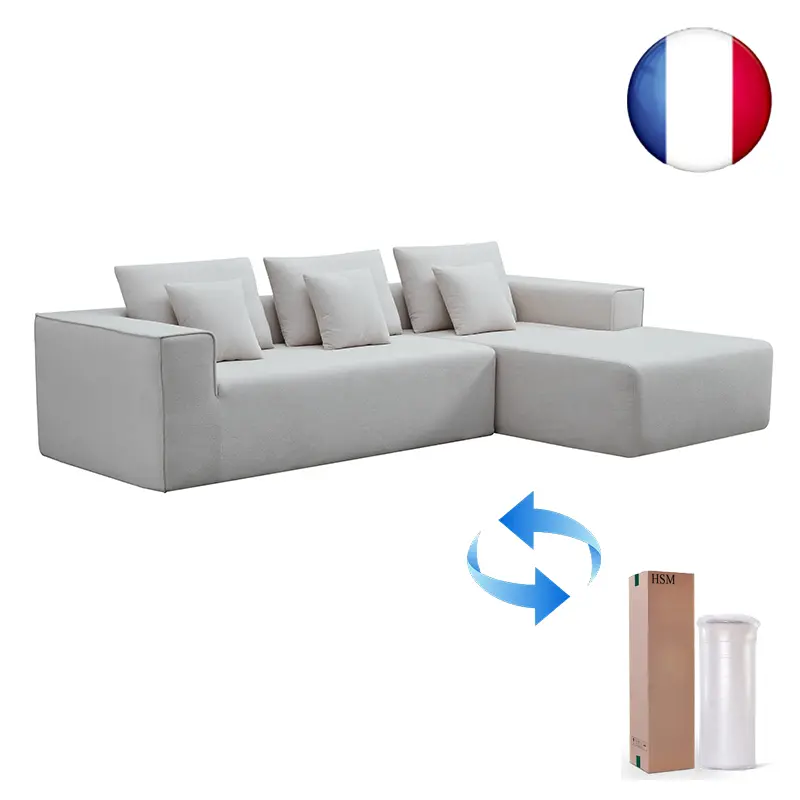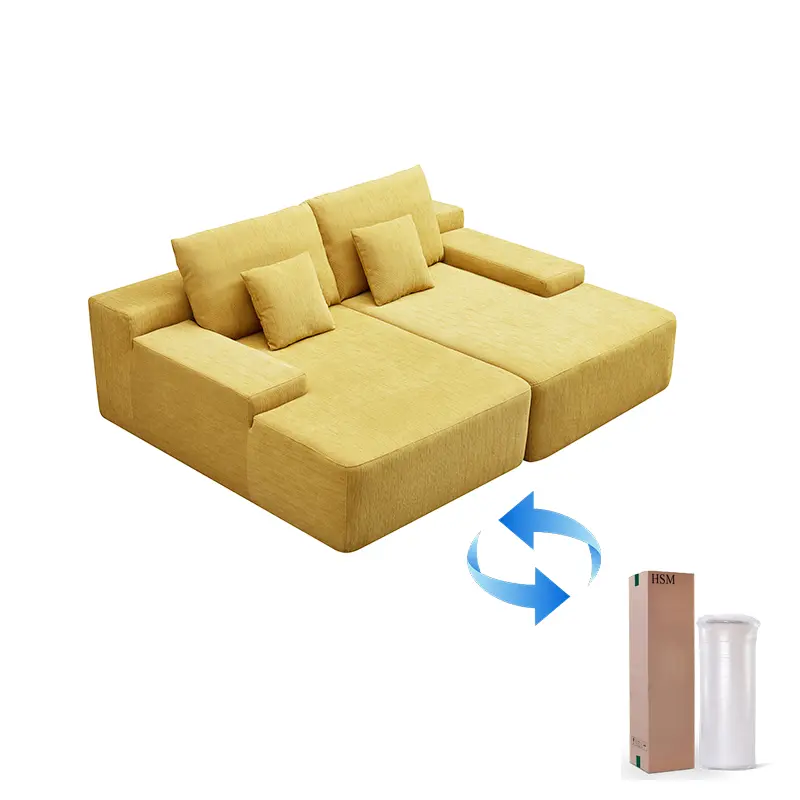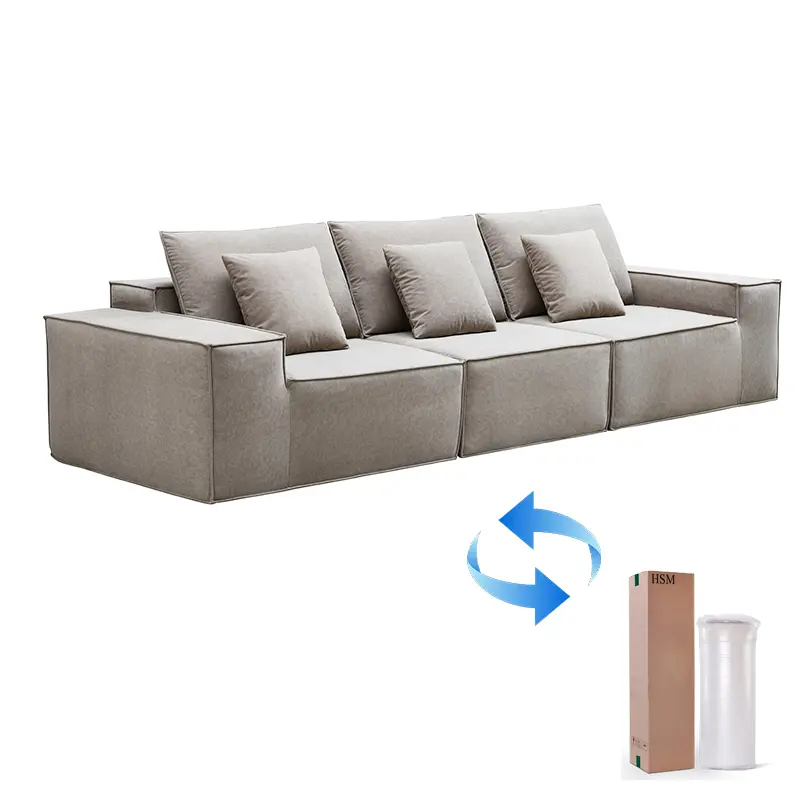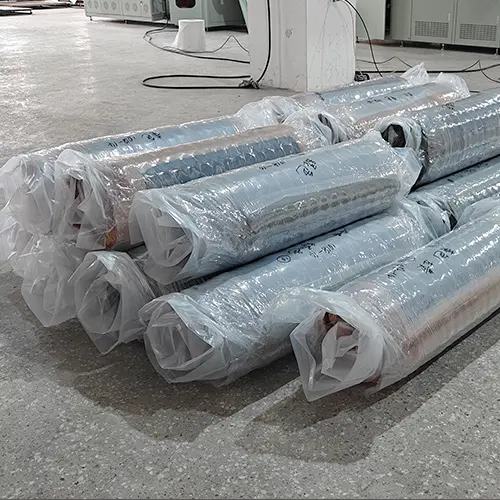How Edge Support Improves Sofa Durability?

A sagging Sofa Can ruin your comfort and make your furniture look old before its time. Weak edges not only make seating uncomfortable but also shorten the lifespan of your sofa.
Edge support enhances a sofa’s durability by reinforcing its structure, preventing sagging, and ensuring long-lasting comfort. Strong edge support distributes weight evenly, resists wear and tear, and maintains the sofa’s shape for years.
Let’s explore how edge support plays a crucial role in ensuring sofa longevity and comfort.
What is Edge Support, and Why Does It Matter?

Many people focus on cushion softness and upholstery material when choosing a sofa. However, edge support is just as important. It refers to the reinforcement of the sofa’s edges to prevent sagging, maintain shape, and provide a stable seating experience. Without proper edge support, sofas wear out quickly and lose their structural integrity.
How Edge Support Enhances Sofa Durability?
1. Reinforces Structural Integrity
A sofa without proper edge support can collapse at the sides, leading to deformation and discomfort. Here’s how edge support strengthens the sofa’s structure:
- Frame Reinforcement: High-quality Sofas Usesolid wood, metal brackets, or reinforced plywood at the edges to prevent sagging and frame distortion.
- Spring Systems: Some sofas include sinuous springs or pocket coils along the edges to provide additional reinforcement.
- High-Density Foam: Sofas with edge support often feature denser foam around the edges, preventing the structure from weakening over time.
A well-supported frame extends the sofa’s lifespan, keeping it sturdy even after years of daily use.
2. Prevents Cushion Sagging

Over time, sofas without strong edge support develop sagging cushions. This makes seating uneven and uncomfortable. Proper edge support helps prevent this issue in several ways:
- Even Weight Distribution: Reinforced edges spread weight evenly across the seating area, reducing pressure on certain spots.
- Prevents Cushion Slippage: Sofas with strong edge support keep cushions in place, preventing them from shifting or sagging.
- Maintains Shape: The edges hold their form, ensuring that cushions retain their original shape and firmness over time.
3. Improves Seating Comfort and Stability
A sofa that wobbles or collapses at the edges is uncomfortable and unreliable. Strong edge support improves seating comfort by:
- Providing a Stable Sitting Surface: When you sit near the edge, you won’t feel like you’re sliding off.
- Supporting Different Sitting Positions: Whether sitting upright or lounging, edge support keeps the sofa firm and comfortable.
- Ensuring Long-Term Comfort: Proper edge support helps prevent uneven wear, so the sofa remains comfortable for years.
4. Increases Resistance to Wear and Tear

The edges of a sofa are the most used parts—people sit, lean, and even rest their feet on them. Without proper reinforcement, these areas wear out quickly.
- Protects Against Moisture and Pressure: High-quality edge support materials, like compressed foam or reinforced wood, protect against environmental damage.
- Minimizes Stress Concentration: The edges of a sofa bear a lot of weight. Strong edge support prevents weak points from forming.
- Reduces Repair Costs: Sofas with poor edge support often need frequent repairs or replacements. Investing in a sofa with solid edge reinforcement saves money in the long run.
5. Maintains Aesthetic Appeal
A sagging, misshaped sofa looks old and worn out—even if it’s relatively new. Strong edge support ensures your sofa stays visually appealing by:
- Holding Its Shape: The structure remains firm and prevents wrinkles or uneven surfaces.
- Keeping Upholstery Intact: Without strong edges, fabric or leather can stretch, crack, or tear more easily.
- Ensuring a Premium Look: High-quality sofas with reinforced edges maintain their luxurious appearance for longer.
How to Choose a Sofa with Strong Edge Support?
Not all sofas are built with durable edge support. Here’s what to look for when choosing a high-quality sofa:
| Feature | Why It Matters |
|---|---|
| Solid Wood Frame | Provides long-term durability and resists bending. |
| High-Density Foam | Prevents sagging and retains shape over time. |
| Reinforced Springs | Ensures stability and even weight distribution. |
| Durable Upholstery | Protects against wear and tear, maintaining aesthetics. |
| Strong Joinery | Avoids weak joints that can break under pressure. |
Practical Tips for Maintaining Edge Support
Even a well-built sofa needs proper care to maintain its edge support. Follow these tips to ensure your sofa lasts longer:
1. Avoid Sitting on the Edges Too Often
Sitting or putting too much pressure on the edges weakens the frame and foam over time. Try to sit in the center or vary your seating position.
2. Rotate and Fluff the Cushions
For sofas with removable cushions, rotate them every few months to distribute wear evenly. This prevents sagging in one area.
3. Use a Sofa Cover or Protector
A good-quality sofa cover protects the edges from dirt, moisture, and accidental spills. This helps maintain the integrity of the frame and fabric.
4. Check for Signs of Damage
Regularly inspect the sofa for loose edges, sagging cushions, or weakened frame joints. Address minor issues early before they turn into costly repairs.
Conclusion
Edge support is a crucial factor in sofa durability, ensuring structural integrity, preventing sagging, and enhancing overall comfort. A well-supported sofa distributes weight evenly, resists wear and tear, and maintains its shape over time.
By choosing a sofa with strong edge reinforcement and maintaining it properly, you can enjoy a long-lasting, comfortable, and visually appealing piece of furniture for years to come.
Want a durable sofa? Invest in quality edge support today!












